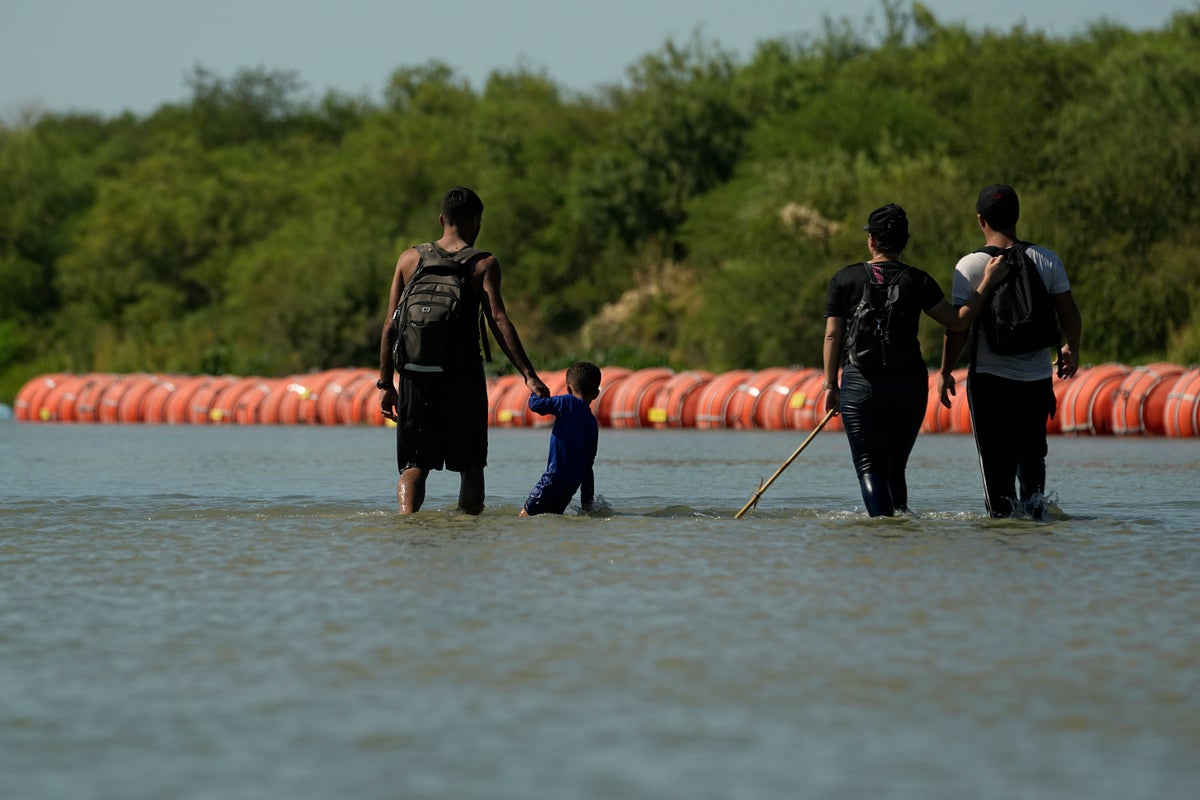
A controversial floating border wall Texas governor Greg Abbott installed across the Rio Grande river appears to have done little to change immigration, according to data.
The floating barrier, made of razor-tipped buoys, was installed in mid-July, but migrant encounters in the Del Rio sector only decreased by about 100, falling from 24,632 in June to 24,513 in July, according to data from US Customs and Border Patrol.
The border wall, which has been condemned by Texas representatives as “cruel and inhumane,” was installed as Governor Abbott invoked a controversial legal theory that the state is under “invasion” and can take emergency military-style action to slow migration.
Since then, the wall has been challenged in state and federal court.
Jessie Fuentes, a local kayak guide, sued Mr Abbott in Texas, claiming the state didn’t have jurisdiction to block off sections of the large regional waterway.
“You’ve taken a beautiful waterway and you’ve converted it into a war zone,” he told The Independent.
The Justice Department also sued the state over the wall, arguing it broke federal law by building in a major waterway without seeking US government permission.
Migrants crossing into the US from Mexico walk along large buoys being used as a floating border barrier on the Rio Grande in Eagle Pass, Texas— (Copyright 2023 The Associated Press. All rights reserved)
Texas has claimed the buoys are deterring migration and saving lives by discouraging illegal border-crossings in dangerous areas, though border experts say this is doubtful.
“They don’t like the buoys we put in the water. Guess what? We put them in to save people from drowning. Drownings are down," Texas lieutenant governor Dan Patrick told Fox News on Monday, without citing any data.
Last month, a Texas trooper said the opposite was true in a leaked series of emails, claiming he had been ordered to push migrants back into the river, and that he had witnessed the barriers already causing serious injuries.
“I believe we have stepped over a line into the inhumane,” he told his superiors, in messages shared with media outlets.
Earlier this month, two bodies were found near the barriers, with one stuck in the razor buoys. Their identities and cause of death are under investigation.
“It’s been proven time after time that these so-called prevention through deterrence strategies don’t work,” Fernando García of the Border Network for Human Rights told The Independent last month. “They have not stopped immigration flows, but what they have done is they have put immigrants at risk.”
“It’s very likely that with [the floating buoy wall] they are looking for more remote and isolated places to come across so that whenever they are in danger by heat exhaustion, by drowning, they will not have anybody to help them,” he added, saying he worries it could be a record year for migrant deaths in the Rio Grande.
Mexican officials have also challenged the floating wall, arguing it violate’s the country’s sovereignty.
A Mexican survey found that at one point, 80 per cent of the floating barrier was on the Mexican side of the river, though Texas has since repositioned the buoys closer to US soil.







